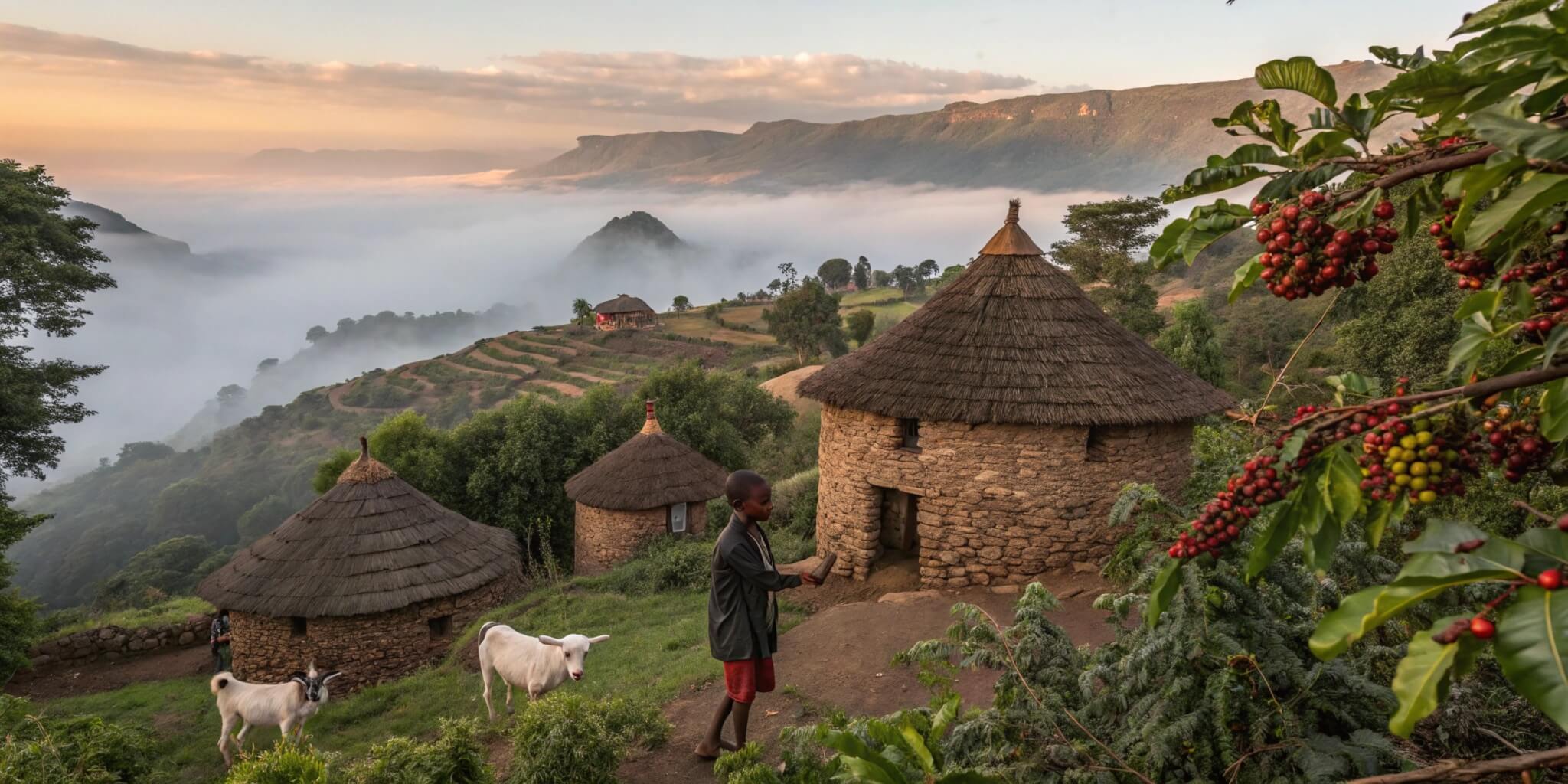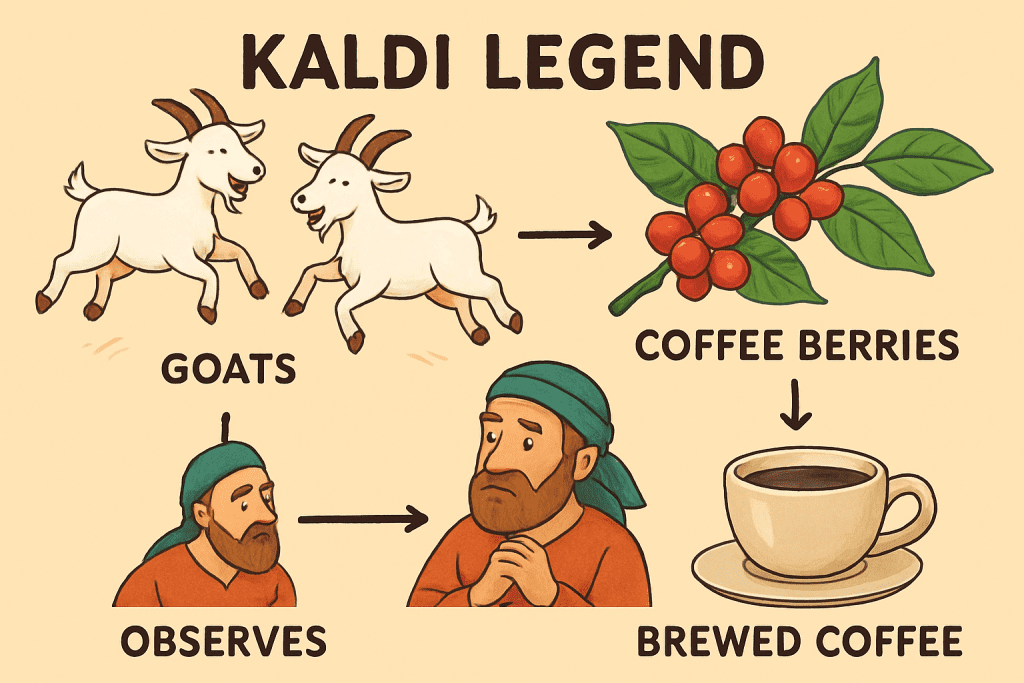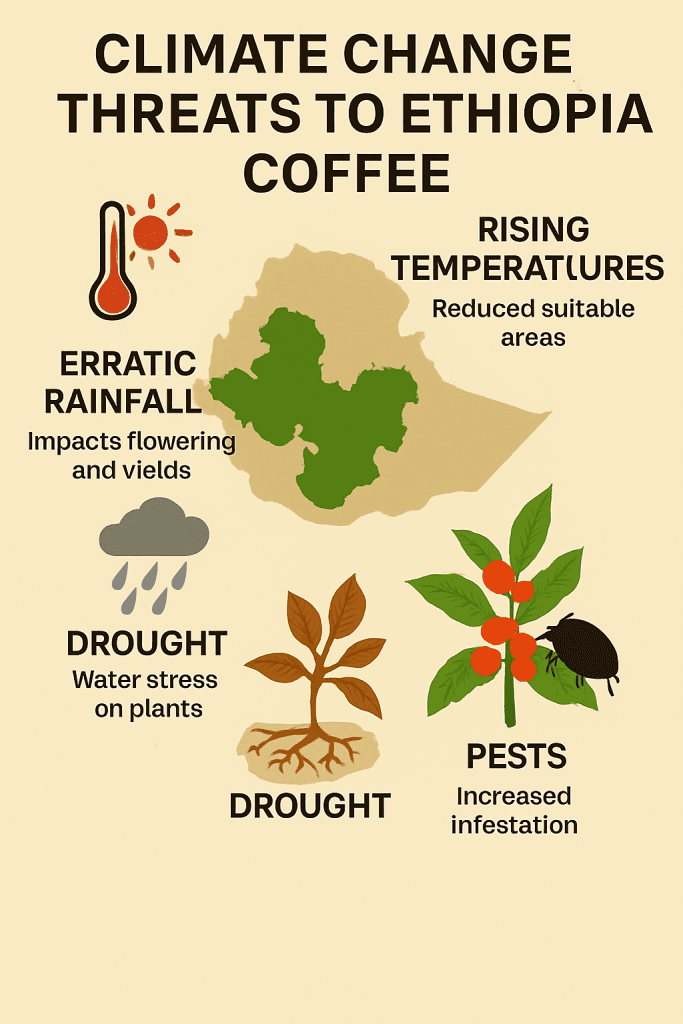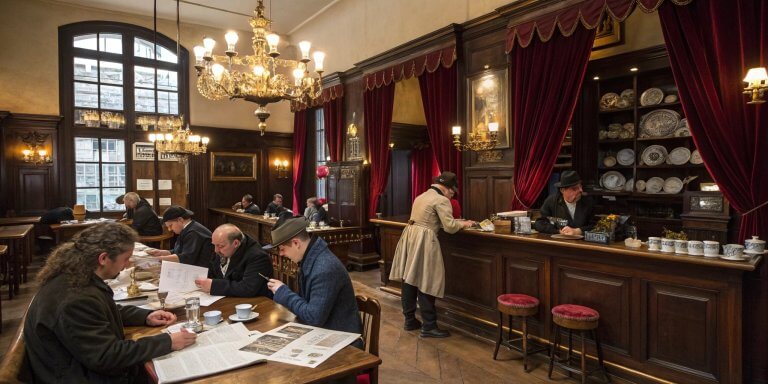
Coffee has become an everyday essential for millions worldwide, but few know the rich history behind this beloved drink. Its journey began in Ethiopia over a thousand years ago when a curious goat herder named Kaldi stumbled upon its energizing properties. Today, coffee has transcended cultural, geographic, and social barriers to become a global phenomenon. This article traces the The Origins of Ethiopian Coffee , its cultural significance, and its worldwide spread while also considering its future in the face of global challenges.
The Legend of Kaldi: The Goat Herder Who Discovered Coffee
According to Ethiopian folklore, Kaldi was a goat herder living in the Kaffa region in the 9th century. One day, he noticed that his goats became unusually lively after eating bright red berries from a particular bush. Curious, Kaldi tried the berries himself and soon felt the same burst of energy. He shared his discovery with local monks, who viewed the berries suspiciously. However, after trying them and realizing they could stay awake longer during prayers, they began to brew a drink from the berries. Thus, coffee was born.

Legend of Kaldi Infographic
While this story is primarily considered a myth, it reflects Ethiopia’s deep-rooted relationship with coffee. What’s interesting is the symbolism of coffee as a means of awakening, both physically and spiritually, which remains integral to Ethiopian culture today. This connection with spirituality is not unique to Ethiopia; in the 15th century, Sufi monks in Yemen also used coffee to stay awake during long religious rituals
The Historical Origins of Coffee in Ethiopia
Beyond the legend, coffee’s origins are tied to Ethiopia’s rich natural environment. Ethiopia is home to the Coffea arabica plant, and coffee grows wild in the forests of the Kaffa region. Genetic studies reveal that Ethiopia has more genetic diversity in coffee plants than anywhere else, supporting the belief that it is the birthplace of the coffee species.
Historians believe that coffee cultivation and consumption began in Ethiopia before spreading across the Red Sea to Yemen in the 15th century. From there, it traveled through the Arabian Peninsula to the rest of the world. Coffee was a critical trade commodity that helped develop ports like Mocha in Yemen, which later lent its name to one of the most famous coffee drinks: the mocha.
The Ethiopian Coffee Ceremony
One of Ethiopia’s most important cultural aspects is the traditional coffee ceremony. It is not just about brewing and drinking coffee—it is a social and spiritual ritual that fosters a deep connection between people. This ceremony typically involves roasting the beans over an open flame, grinding them by hand, and brewing them in a clay pot called a jebena. The process takes time, and the coffee is often served in three rounds, symbolizing friendship, respect, and spiritual reflection.

Ethiopian Coffee Ceremony Steps
Unlike the fast-paced coffee culture in Western coffee shops, the Ethiopian coffee ceremony fosters a deep connection between people. It is seen as a way to slow down, enjoy the moment, and engage in meaningful conversation. In a way, the ceremony mirrors the essence of Ethiopian culture, where coffee is more than a drink—it’s an experience that brings people together.
Ethiopia’s Coffee Economy
Coffee is part of Ethiopia’s cultural fabric and a significant pillar of its economy. Ethiopia is Africa’s largest coffee producer and coffee accounts for approximately 30% of the country’s exports
Over 15 million Ethiopians rely on the coffee industry for their livelihoods, making it a critical sector for the nation’s development.
What sets Ethiopian coffee farming apart is its unique traditional approach. Small-scale farmers cultivate coffee in forests, gardens, or on small plots, fostering biodiversity that protects the plants from diseases and pests. This sustainable farming method stands in contrast to the monoculture farms prevalent in other countries, making Ethiopian coffee farming a model of environmental responsibility.
The Spread of Coffee
After its discovery in Ethiopia, coffee didn’t just spread geographically, but also socially. By the 15th century, it was cultivated in Yemen and traded across the Middle East. Coffeehouses, known as qahveh khaneh, became popular in cities like Mecca, Cairo, and Istanbul. These establishments were more than just places to drink coffee; they were hubs of social interaction, where people gathered to discuss politics, religion, and social issues. This communal aspect of coffee consumption, which has its roots in Ethiopia, remains a key part of coffee culture today.
By the 17th century, coffee reached Europe, where it was embraced by intellectuals and artists alike. Coffeehouses sprang up in cities like London, Paris, and Vienna, serving as meeting places for scholars and revolutionaries. These coffeehouses played a significant role in shaping European thought and culture during the Enlightenment period
Colonialism and the Coffee Trade
As coffee’s popularity grew, European powers sought to control its production. They established plantations in colonies like Indonesia, the Caribbean, and Central and South America. This shift in production marked the beginning of coffee as a global commodity. Unfortunately, the colonial coffee trade was often built on the exploitation of enslaved or poorly paid labor, particularly in Latin America
Unfortunately, the coffee industry is not without its dark side. Even today, farmers in coffee-producing countries like Ethiopia often earn very little compared to the profits made by companies in Western countries. This stark inequality has led to the rise of fair trade and direct trade initiatives, which aim to ensure that coffee farmers receive a fair price for their crops. These initiatives are a crucial step towards a more equitable coffee industry, one that respects the hard work and dedication of the farmers who grow our coffee.
The Future of Ethiopian Coffee
Ethiopia’s coffee industry faces several challenges, including climate change and fluctuating global prices. Rising temperatures and changing rainfall patterns threaten the delicate ecosystem where coffee grows, and many farmers struggle to adapt. Some estimates suggest that up to 60% of Ethiopia’s coffee-growing land could become unsuitable for cultivation by the end of the century

Climate Change Impact on Coffee
Ethiopian farmers and researchers are exploring sustainable farming practices to combat these challenges. Shade-grown coffee, which involves planting coffee under a canopy of trees, helps preserve the environment and protect coffee plants from extreme weather conditions. Additionally, organizations like the Jimma Agricultural Research Center are working on developing more resilient coffee varieties that can withstand the impacts of climate change.
Conclusion
From the legend of Kaldi’s goats to its current status as a global commodity, coffee has come a long way. While its origins are deeply rooted in Ethiopian culture, its impact has been felt worldwide. Coffee continues to bring people together, whether through the intimate setting of an Ethiopian coffee ceremony or the bustling atmosphere of a modern coffee shop.
As we sip our daily brew, it’s worth remembering the long journey coffee has taken—from the highlands of Ethiopia to the world stage. Whether enjoyed for its rich flavor or energizing effects, coffee remains a powerful cultural and economic force, uniting people across borders and generations.






